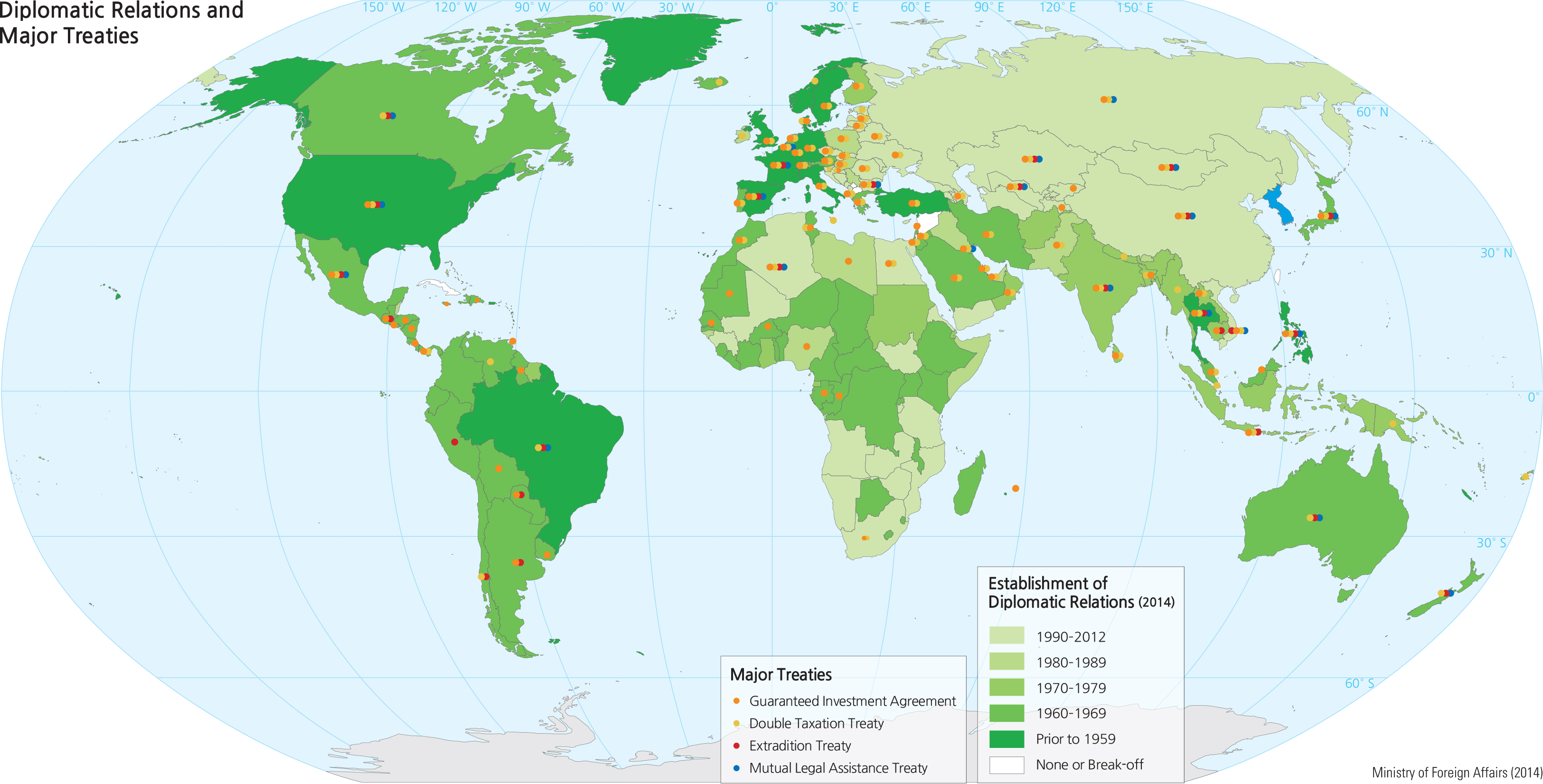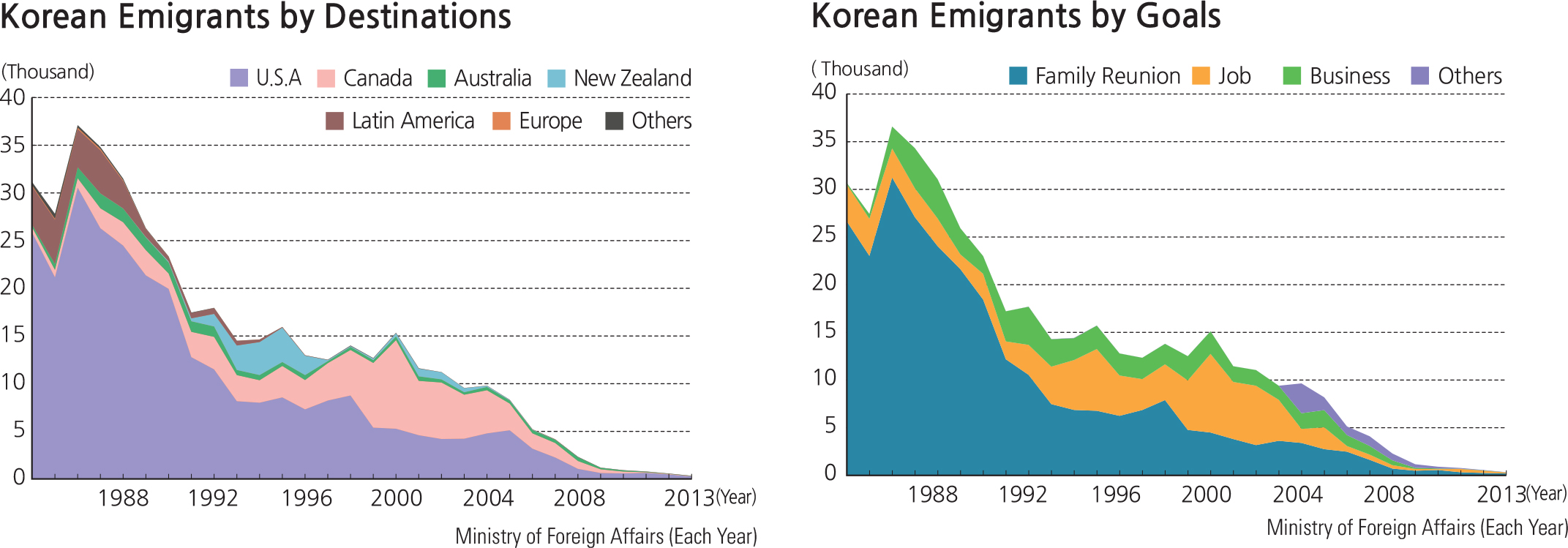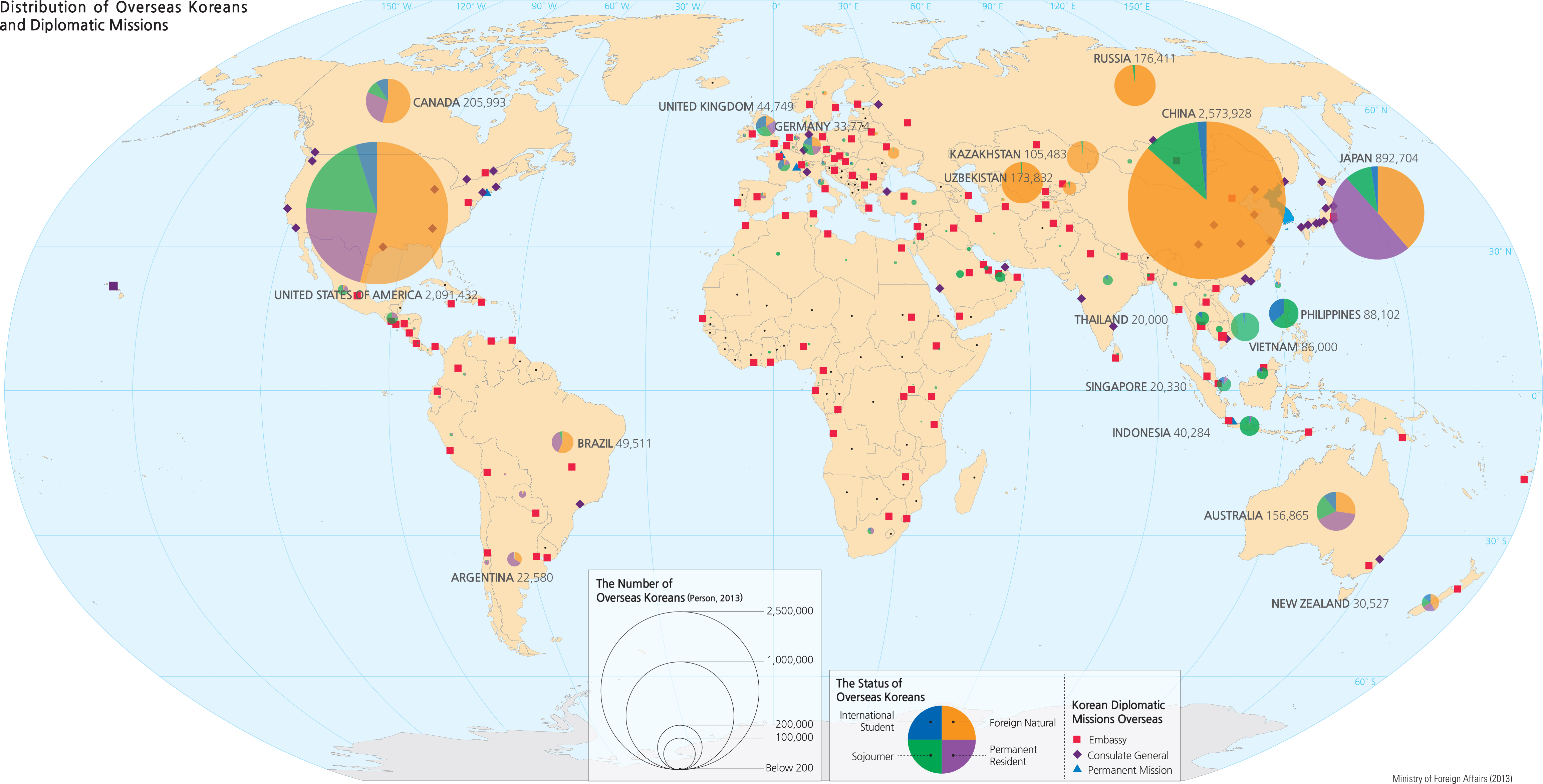Comprehensive Edition
The 21st century is an era of rapid globalization, a time that truly tests all countries politically, economically, and culturally. Korea has risen to the challenges of this growing globalization on many fronts, both at home as well as in the relationships it has with other nations in Asia and beyond. Not only has the South Korean government continued to expand diplomatic ties with other countries it also promotes fostering important treaties with other countries. Korean diplomatic establishments continue to expand worldwide with embassies, missions, and consulate generals dispatched to countries across the globe. The movement of people across the Korean border has also increased, by Korean citizens traveling abroad for both personal and professional reasons, as well as a steadily rising influx of visitors to Korea including tourists, foreign workers and new immigrants. Korea is now a key player on the world political stage. After South Korea entered into the United Nations and other UN-affiliated organizations, it now joins other nations in the pursuit of global peace-keeping, human rights, economic development, and environmental protection. The Korean government has also successfully developed bilateral and regional Free Trade Agreements (FTAs) to complement the existing multinational trading system. These FTAs have allowed Korea to mitigate the economic challenges presented by an unbalanced domestic distribution of wealth and population as well as the stark realities of an aging populace and an overall low birth rate. As of December 2013, South Korea maintains diplomatic relations with 188 countries among the 191 United Nations member states and with two non-UN member countries, the Cook Islands and the Vatican. The UN member countries that do not yet have a treaty with South Korea are Macedonia, Syria, and Cuba. Kosovo, a non-UN member country, also does not have a diplomatic relationship with South Korea. The “iplomatic Relations and Treaties”map displays the countries that signed treaties with South Korea regarding such matters as guaranteed investment agreements, double taxation treaties, extradition treaties, mutual legal assistance treaties. Specifically, 87 countries have signed investment guarantee agreements; 78 signed double taxation agreements; 26 signed extradition treaties, and 22 countries signed criminal judicial cooperation treaties. Among these, 15 countries, including the United States, China, and Japan signed all of these treaties. The “umber of Signed Treaties”graph shows the number of treaties signed by year. It indicates that as the number of countries with diplomatic ties with South Korea has increased, the number of countries with bilateral and multilateral treaties signed increased as well. Overseas Koreans and Diplomatic Missions The “verseas Koreans and Diplomatic Missions”map shows distribution of Koreans and South Korean diplomatic missions overseas. These missions are grouped into embassies, missions, and consulate generals. Embassies are set up in the capital of a country with diplomatic relations. Permanent missions are set up within an international organization that Korea joins. Consulate Generals are opened wherever a large number of Koreans reside overseas. At present the Korean government manages 113 resident embassies, 5 permanent missions, and 43 consulate generals across the 190 countries with which South Korea maintains diplomatic relations. Many consulate generals are found in North America and Asia because Korea has close relationships there, particularly with the US, Japan, and China, and because many Koreans live in these regions. North Korea, on the other hand, has 47 resident embassies, 4 permanent missions, and 3 consulate generals overseas. The same map also presents the geographic distribution of Koreans living overseas according to data collected by Korean diplomatic missions. They are divided into Korean nationals who have Korean citizenship and foreign nationals who have foreign citizenship. The overseas Korean nationals are further divided into permanent residents, international students, and sojourners. The number of overseas Koreans increased sharply in 1991 because the government began counting the Korean-Chinese population that year for the first time. A gradual increase appears after 1991. Currently, the number of overseas Koreans is close to 7 million, and of that total 1.1 million are permanent residents, 1.2 million are sojourners, 0.3 million are international students, and 4.4 million are foreign nationals. Until the late 1980s, most emigrants moved to the US, but many also moved to Latin American countries. After the Seoul Olympic Games in 1988, Latin America emigration decreased while emigration to English-speaking countries such as Canada, Australia, and New Zealand increased, resulting in an increasingly scattered distribution. The top reason given for emigration was family reunification, followed by employment and personal business opportunities.
|



